Pinterest is a great visual discovery platform with over 600 million monthly active users worldwide, as of the third quarter of 2025. This is a huge opportunity for brands who want to showcase their products and ideas online, in front of millions of people.
Most people don’t know this, but Pinterest also drives more referral traffic to eCommerce websites, helping brands significantly boost their conversions.
But to truly inspire people and drive conversions, you first need to amplify your reach and get more followers on Pinterest.
However, a common challenge persist, most brands don’t know how to get followers on Pinterest.
So we have come up with this guide, where we’ll discuss 18 practical strategies to attract more followers and drive engagement and sales.
So, without any further ado, let’s get started.
Key Takeaways:
- Brands that post consistently, maintain visual quality, and stick to clear brand guidelines build stronger recognition and attract more followers on Pinterest.
- Optimize the pins by using the right keywords, hashtags, and descriptions and enable the rich pin feature on your website. This ensures that your Pins appear in the right searches and drive more traffic to your site.
- Keep a check on Pinterest Trends to Analytics to see what’s truly resonating with your audience. When you align what’s popular with what’s working for you, your Pinterest followers begin to grow.
18 Ways to Get More Followers on Pinterest
1. Convert to a Business Account
If you’re serious about growing your audience on Pinterest, switching to a Business Account on Pinterest should be your first move.
Pinterest for Business unlocks powerful features like Pinterest Analytics, Rich Pins, and Ads Manager, which help you understand what content performs best and how to amplify it.
Rich Pins is a particularly useful feature that automatically pulls extra information from your website and displays it directly on the Pin — like title, description, price, ingredients, or author name. With rich pins, you can link your website and display relevant information from it directly on your Pin.
Rich Pins also perform better in the algorithm because they provide verified, structured data, which is favoured by the algorithms.
So, essentially, using a Pinterest business account instead of a personal Pinterest account can transform your profile into a growth engine, so you can get more followers, traffic, and conversions.
2. Post Quality Content Regularly
To get noticed and compete with established pinners, you need to regularly post quality content that is not just creative but also original. In this crowded space, high-quality visuals and well-crafted descriptions can make users stop scrolling and engage with your posts.
When you share quality content on your Pinterest account, it gets shared more and makes your brand appear credible and reliable. You can also use stock images as long as they don’t compromise the quality of your pin.
Here we have the profile of Joy Cho, also known as Oh Joy!, a designer and blogger, who used her creative art and quality photography skills to amass a whopping 15 million followers and 4.4 million monthly views. Her secret?
Posting good, quality content that is visually appealing and attracts a larger audience.


If you’re also a blogger or content creator, you can also explore how Pinterest can amplify your reach by checking out this guide on how to use Pinterest for blogging.
Basically to get more Pinterest followers, you must keep your posting rhythm steady, even on the busy days, and produce content that adds value.
Posting regularly on Pinterest requires a proper plan, which can be best implemented if you use the right scheduling tool.
SocialPilot lets you visualize your Pinterest posting plan on a social media calendar and execute it effortlessly with powerful scheduling. Create and Schedule pins for multiple Pinterest accounts from a single dashboard and see them spread across the calendar to get the big picture.
Let SocialPilot take care of your posting, while you focus on creativity and quality.
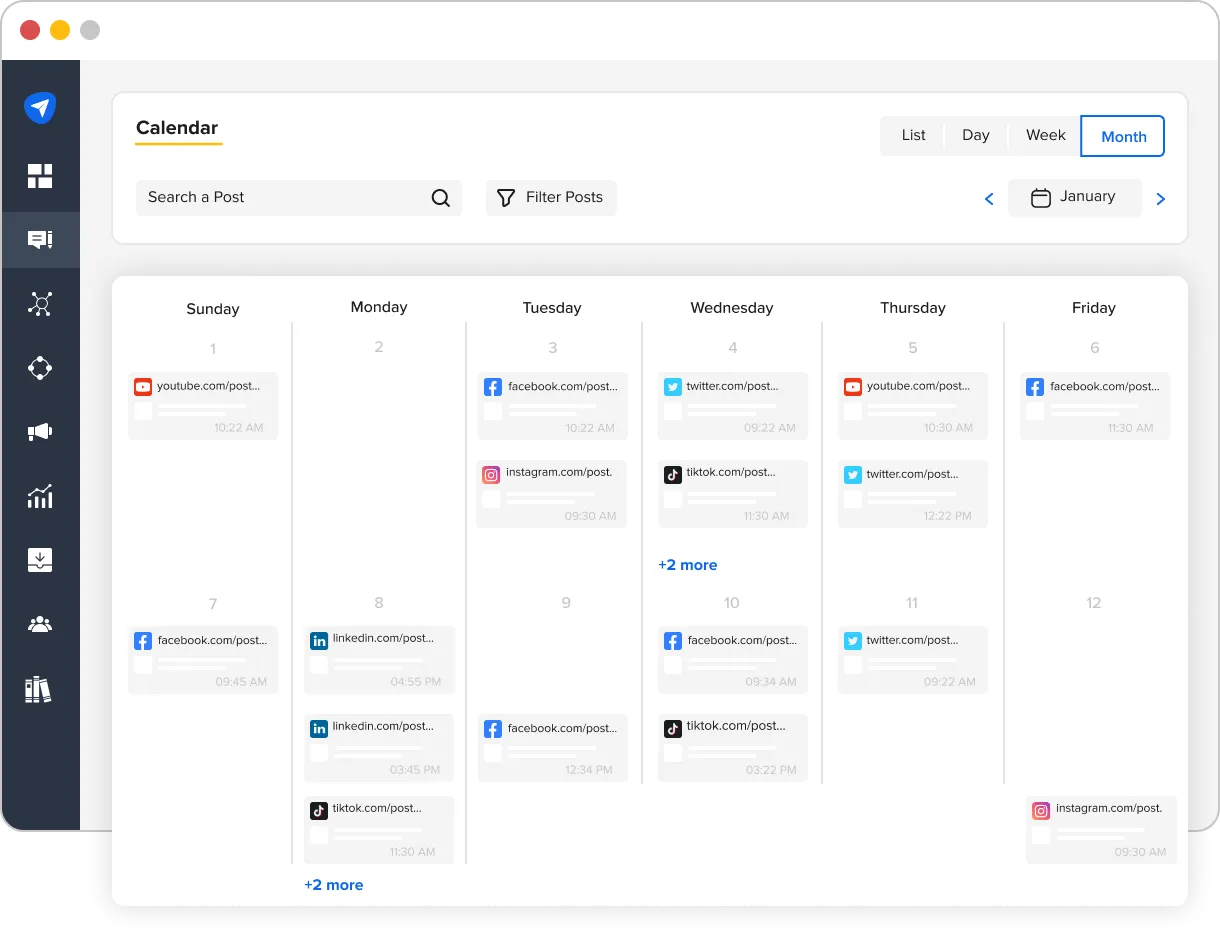

Start Your 14 Day Trial Today!
3. Include Text Overlays
A text overlay simply means placing a few words directly on your image, and what it does is it tells people what your Pin is about before they even read the description.
For instance, instead of just showing a picture of different breakfast options, adding text like “5-Minute Breakfast Recipes Perfect for Hectic Mornings” immediately grabs attention and tells users why they should click.
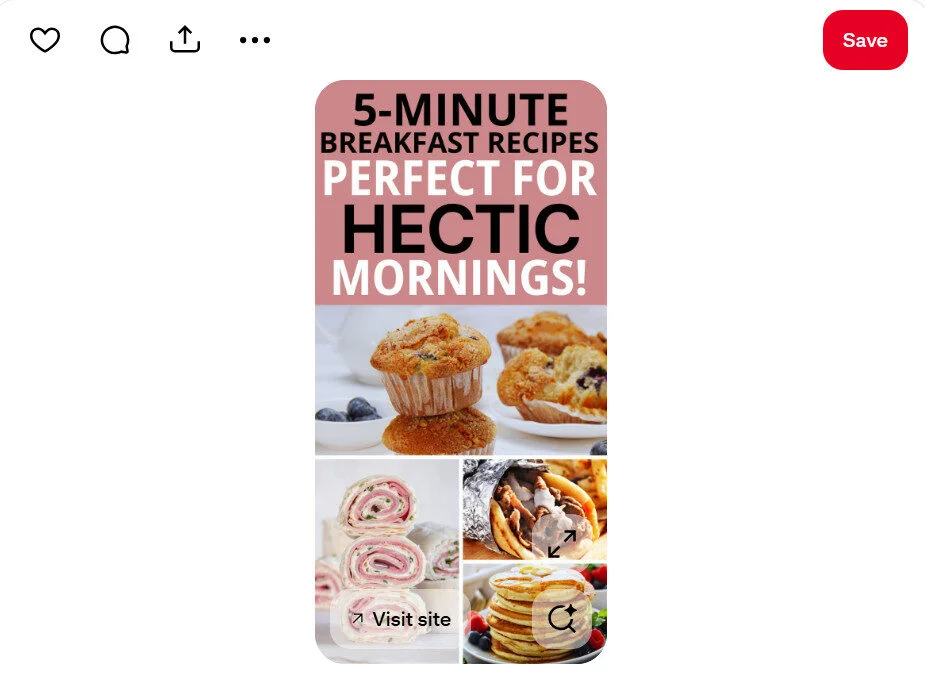

Text overlays boost clarity and perform better in searches because they’re easier to recognize by both humans and algorithms.
When adding text overlays, make sure to use consistent fonts, colors, and styles, as this will help you build a recognizable brand identity over time.
4. Use Short Videos and GIFs
Pinterest isn’t just an image search engine—it’s evolving into a dynamic content space, and short videos and GIFs are at the forefront of this shift.
According to Pinterest, video Pins are 6x more likely to be saved than static image Pins. They autoplay in the feed, grabbing user attention immediately and increasing both impressions and engagement rates. In fact, Pins with motion (GIFs or videos) often generate higher click-through and follow rates, as they encourage viewers to interact and learn more.
Why does this work? Because people love movement content, and it catches the eye while scrolling, and also videos allow for conveying more value in less time.
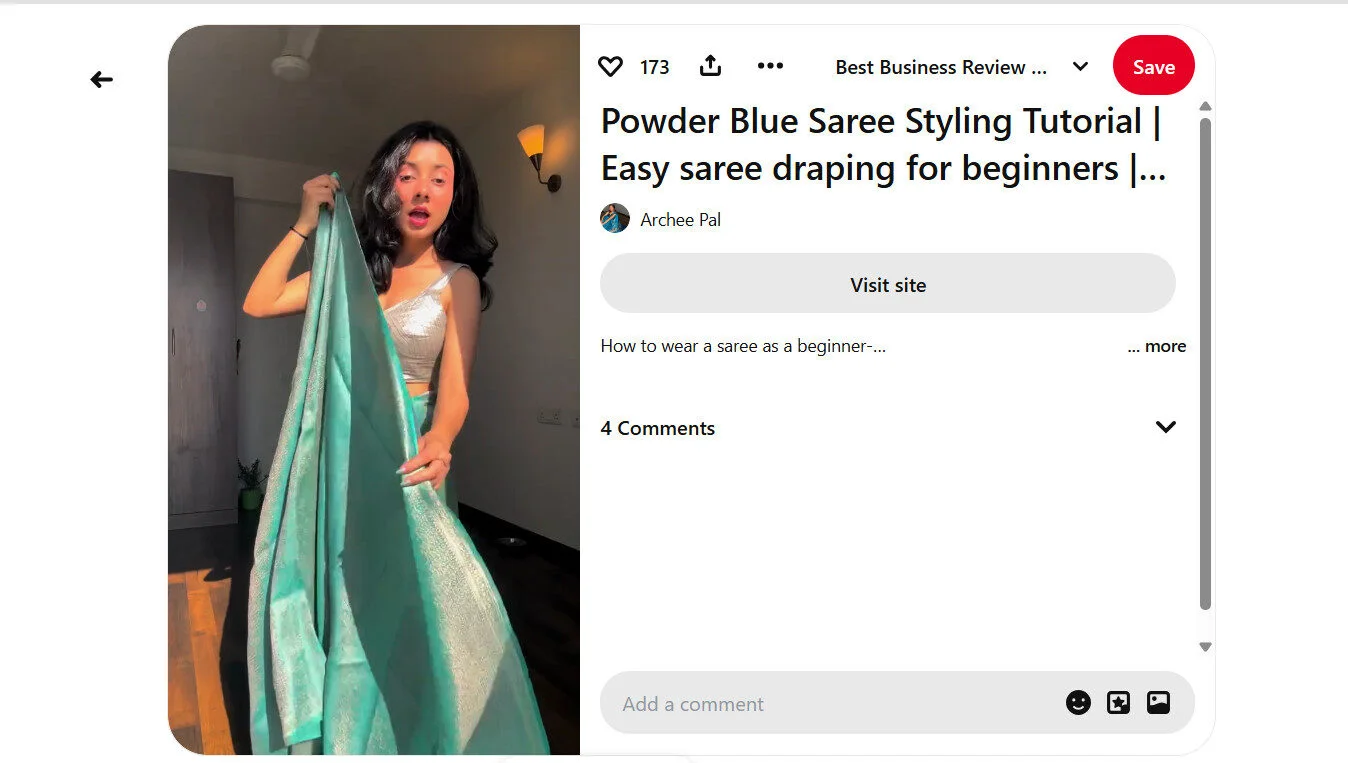

Best Video Pin Practices to Get More Pinterest Followers:
- Keep it short and snackable – Aim for 6–15 seconds for max retention.
- Use vertical format (2:3 or 9:16) for a better mobile experience.
- Add text overlays to explain or highlight your message.
- Include a strong CTA (like “Follow for more tips” or “Save this idea”).
- Use Pinterest’s native video uploader for better performance.
- Try looping GIFs for fun, quick content like reactions, hacks, or transformations.
Here Are Some Content Ideas: Quick DIY hacks or recipes, before-and-after makeovers, sneak peeks or teaser clips, Product highlights or tutorials, Animated quotes, and How-to-use or quick guides.
5. Test Different Content Styles
So, as we know, Pinterest is a visual search engine, so the posts you create must be visually appealing, but still, there are a lot of formats you can experiment with.
You can create:
- Static image pins using a single high-quality image with a text overlay
- Video pins, like short clips or animations
- Idea Pins/ Multi-Page Pins, wherein you can add several pages/images in a swipeable story format and enrich them with voiceovers.
- You can also create infographics/checklists/tips-style pins, especially if you are into service-oriented or educational niches.
But now the question is: which one of these performs best?
Well, on Pinterest, a mix of different content styles is what wins. While video pins are gaining popularity and close to one billion videos are watched on Pinterest every day, static pins, especially those with high-quality images and clear messaging, tend to perform equally well.
Additionally, Infographics/checklists/tips/quotes and idea pins showing before/after or process flows are also widely used by coaches, consultants, and other service-based businesses.
Just like the image below, which shows the before and after images of a living room transformation.
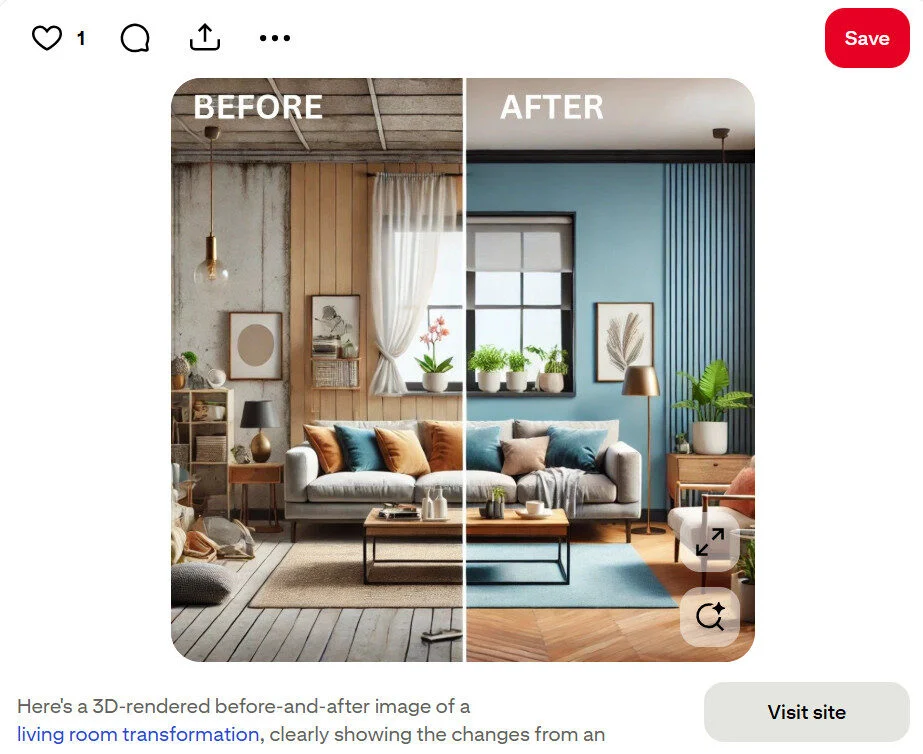

Here is a complete Pinterest marketing strategy guide to help you understand how you can experiment with different content formats on this platform.
6. Maintain Brand Guidelines Consistently
When all your pins look consistent, it’s easier for people to spot you on their home feed, in search results, and on group boards. In fact, the more consistent your design, tone, and message, the faster users start associating with you.
Here are some ways in which brands can maintain consistent guidelines on Pinterest:
- Stick to the same color palette and typography. This visual repetition helps your Pinterest followers recognize your content.
- Maintain uniformity in photography style, like lighting, filters, image composition, and logo placement.
- Use branded templates that you can create on Canva or Adobe Express. This will help keep the layout uniform.
- Make sure your tone and messaging reflect your brand personality.
- Your Pinterest content must look like an extension of your website or other social media platforms.
This Pinterest page by Mel Robbins, a bestselling author and motivational speaker, perfectly showcases consistent branding. Each Pin uses the same fonts, colors, and layout, making her content instantly recognizable and cohesive.
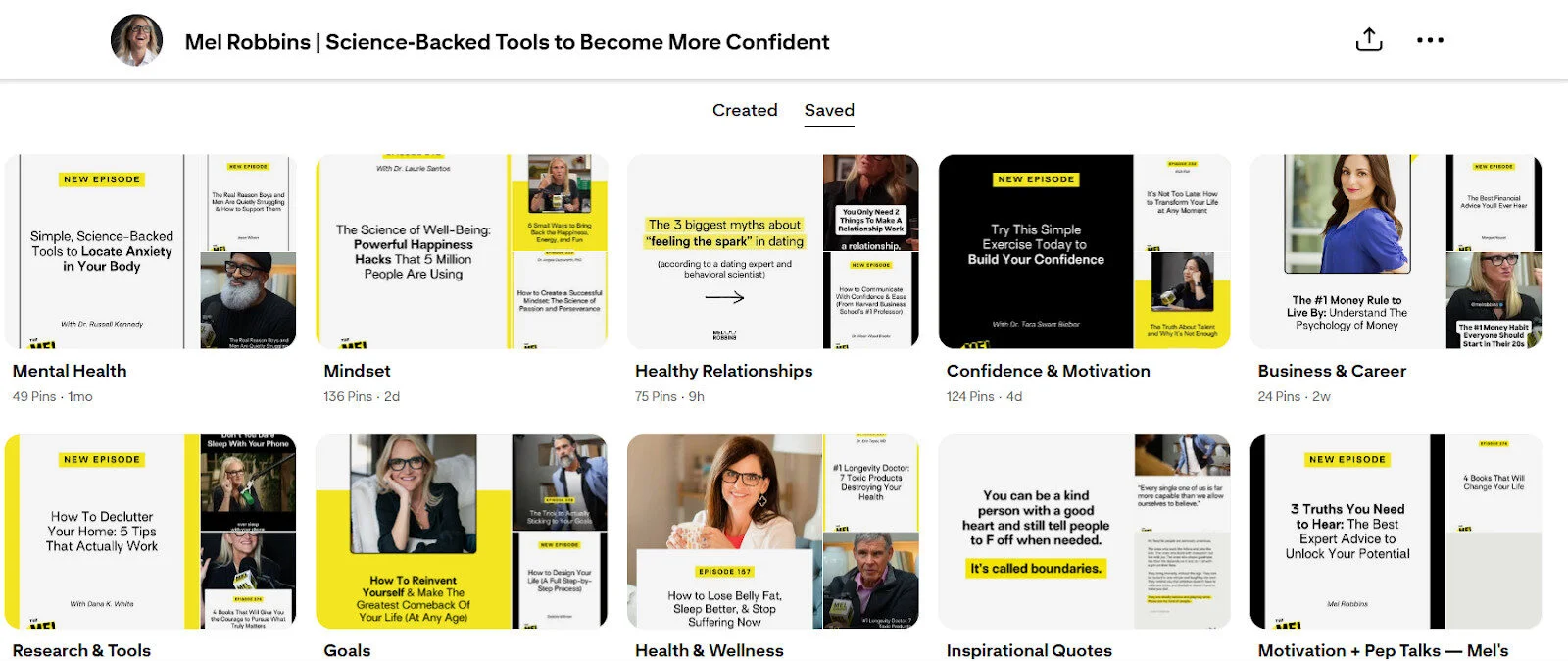

Following these guidelines will help you create a consistent visual identity that will not just help you stand out, but will also help you stay remembered.
7. Use Pinterest Sections to Organize Boards
If your Pinterest account looks cluttered, it can confuse visitors and drive them away. But with Pinterest sections, you can divide a single board into smaller, focused categories that make your profile look more organized.
Here’s how you can create Pinterest Sections
- Go to one of your Pinterest boards.
- Click the “+” icon and select “Add section.”
- Give your section a clear, keyword-rich name (like “Minimalist Outfits” instead of just “Looks”).
- Start adding relevant Pins to that section. You can either move existing Pins or add new ones directly.
Following these simple steps can make your board look cohesive and search-friendly, as shown in the image below. This will help improve your users’ experience and boost visibility.


Pinterest also uses your board and section titles to understand your content better, so having clear titles can also enhance the SEO visibility of your profile.
8. Use Tools to Boost Visibility for Your Pinterest Board
There are several tools that can help you build a strong presence on Pinterest. To begin with, use the design tools like Canva, Adobe Photoshop, or VistaCreate to create visually appealing aesthetics.
Once you have designed your pins, the next step must be to post them at the right time. This is where you can use scheduling tools like SocialPilot, Tailwind, or Buffer to schedule your pins in advance.
Finally, explore Pinterest plug-ins and SEO tools like Keyword Tool, Hashtagify, or Pin Inspector to find trending hashtags and keywords for better discoverability.
9. Use the Right Keywords
Pinterest is like any other social media platform, where for your pin to be discoverable, it should have the relevant keywords.
Here is how you can find the right keywords for your pin.
Start by typing your main topic into the Pinterest search bar, and the autocomplete suggestions that come up are the real user searches. For example, if you sell candles, Pinterest might suggest “scented candles aesthetic” or “DIY soy candles.” Use these exact phrases in your Pin titles, descriptions, and board names.
You can also pull keyword ideas from Pinterest Trends or competitor Pins in your niche.
Use the most relevant ones and avoid overstuffing; just using 3-5 target keywords would be enough.
Hashtags help categorize your Pins so users exploring those tags can find you faster. To add the right hashtags, you must do your research to see what’s trending (because these trends keep changing). Add one broad hashtag with one niche hashtag, for instance, combine #HomeDecor with #MinimalistBedroomIdeas.
Here also, don’t overdo it, just use 2–3 hashtags per description. We don’t recommend overusing the hashtags, as done in the below image.


Read this guide on how to use the right hashtags and make sure that the ones you use align with your audience, not just the viral trends.
11. Add Descriptions
A pin description helps your audience and algorithms understand what your pin is about. Descriptions also give you space where you can add context, provide value and subtly add a few keywords to help your pin get discovered.
On Pinterest, you can add descriptions that are up to 500 characters, but ideally, we suggest keeping the length of at least 300 characters to receive the highest number of repins. Also, be extra careful with the first 40 characters as these words are most likely to show up in people’s feed.
You can also naturally sprinkle some keywords or add a mini call-to-action, to further improve your discoverability.
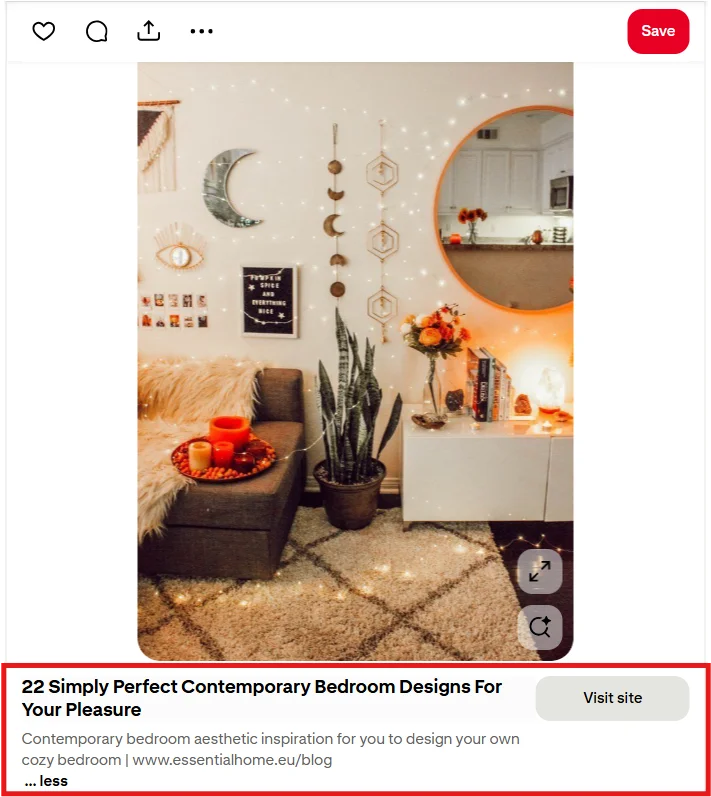

12. Use Pinterest Idea Pins
So, Idea Pins are these short, swipeable posts on Pinterest that look a lot like Instagram Stories. These are multi-pager, interactive Pins that let you share videos, images, text, and even voice-overs in one post.
The purpose of these pins is to inspire and educate your followers within Pinterest itself, and so these pins don’t link directly to any external websites.
The image below shows what an idea pin looks like
While both personal and business users can use idea pins, they work very well for brands, creators, and bloggers who want to grow their following and engagement organically.
Here are some ways in which brands can benefit from using idea pins:
- These pins boost visibility because they appear prominently on the home feed and discovery pages
- It helps brands share useful, actionable content and become a go-to source of information in their niche
- Idea pins drive engagement because users can react, comment, and even follow directly from the Pin
- These pins keep users interacting with your profile and bring you repeat traffic.
So, the more idea pins you publish, the more Pinterest’s algorithm rewards you by connecting you with the right audience who are actively seeking inspiration or looking for product solutions.
13. Enable Rich Pins on Your Own Website
Rich Pins are a special type of Pinterest Pin that automatically syncs information from your website and displays it directly on the Pin. This means whenever you update your website — like a product price, recipe ingredient, or blog title — your Rich Pins also get updated.
Rich pins are of four types: Product pins, article pins, recipe pins, and app pins. These pins include the extra information that Pinterest users can see once they click on your Pin.
The image below shows how rich pins look different from normal pins.
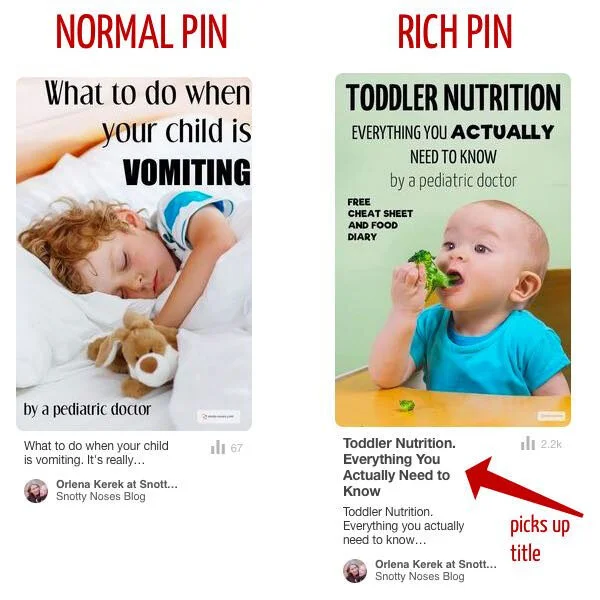

When businesses enable rich pins:
- Their pins get automatically updated without any manual edits.
- When you add more context to your pins, they get clicked more often.
- Rich pins also rank higher because the content comes from verified sites. This helps improve visibility and engagement.
Also, when users see information-rich content coming from a verified site, they tend to trust it more, and they are also more likely to follow your account for future updates.
14. Choose the Best Posting Times
When posting on Pinterest, it’s not just about what you post, but also when you post.
When you publish your pins at the right times when your audience is active, you give your content a head-start, i.e, a chance to get more views, likes, and followers.
We at SocialPilot analyzed 7 million posts from over 50,000+ accounts to understand the best posting times on social media, and here is what our data says about Pinterest.


The best posting times for Pinterest are 4 PM, 8 PM, and 9 PM (local time) on most days. Also, Sunday, Monday, and Tuesday are the best days.
So, what really happens when you post at these times:
- Your pin gains traction as it is seen by more people
- More visibility also leads to more saves and clicks.
- Over time, people will also start following you if they like what you post.
On the contrary, posting at weak times often means your content gets buried or delayed in the feed, thus delaying your traction and growth on Pinterest.
15. Take Inspiration from “Pinterest Trends”
Pinterest has a built-in tool called Pinterest Trends that tells you what’s trending on Pinterest right now or what your target audience is searching for.
It shows you the most popular search topics, seasonal spikes, and emerging interests across categories like fashion, home décor, food, beauty, and more.
Here is how brands can benefit from Pinterest trends:
- Look for your niche keywords and try different variations of this keyword to see what’s trending.
- No matter what business you are in, keep a watch on the seasonal trends in your industry.
- Align your Pin schedule with when those trends are rising.
- Look at trending Pins to understand color palettes, formats, and design styles that are currently resonating.
When you leverage these trends strategically, you can start creating content that actually matches your user intent and stay ahead of the curve. Also, don’t just stop at trends; combine these Pinterest Trends insights with your analytics data (more on this in the next point).
16. Analyze the Data
So, you can’t improve something that you don’t measure, and on Pinterest, it’s no different. You must track your data if you want to grow.
This is where Pinterest analytics can help.
It tells you how your content performs, what people love, what they ignore, and what drives the most engagement or traffic. But these metrics are only available for business accounts.
Brands must keep a watch on their impressions, saves, outbound clicks, engagement rates, like saves, clicks, or comments, and audience insights.
At the same time,
- Analyze your top-performing pins and double down on them.
- Check when your Pins get the most engagement and schedule around those windows.
- Track which search terms are driving your impressions
- What content formats are working for you? That’s your cue to create more such visuals.
When brands bring together insights from Pinterest Trends and Analytics, they can understand what it is that’s trending and works for their brand. While trends give you direction, data gives you proof, and together they can help you grow faster on Pinterest.
Getting more Pinterest followers isn’t just about posting great content; it’s also about being an active part of the Pinterest ecosystem. Pinterest rewards interaction and consistency (which means engaging with others).
Commenting on pins and following your niche boards can significantly increase your profile visibility and follower count.
Why This Works?
- Pinterest’s algorithm favors active users who engage beyond their own boards.
- Engaging with others improves your chances of getting followed back.
- Group board participation increases your Pins’ reach and saves potential by 20–30%, especially if the board has a large follower base.
- Authentic engagement builds authority and trust within your niche.
How to Do It Effectively?
- Join niche-relevant group boards, those with active contributors and high engagement. Your Pins shared there will be visible to a wider audience instantly.
- Follow creators in your niche, as this will trigger reciprocal follows and suggest algorithms that your profile has similar audiences.
- Like, comment, and re-pin content shared by other people/brands. Make it a practice to engage with 5–10 new profiles or group boards every week.
- Leave thoughtful comments and ask relevant questions to spark meaningful conversations. Whenever a new visitor sees that pin, they will definitely visit your profile.
18. Cross-Promote Your Pinterest Account
If you are creating great content on Pinterest and not sharing it on other platforms, you are doing great injustice to your brand.
Cross-posting your Pinterest content on other platforms like Instagram, Facebook, YouTube, email newsletters, or even your website can create a digital bridge, where every platform becomes a path leading people to your Pinterest profile.
So, how can brands cross-promote their Pinterest posts:
- You can embed Pinterest boards on your website, showing your latest Pins; this subtly invites your website visitors to follow you on Pinterest.
- Link the Pinterest profile in email signatures and newsletters.
- Promote your pins on Instagram stories or Facebook posts with a “Save it on Pinterest” CTA.
- Add Pinterest buttons to your product pages. This allows your customers to pin items directly from your site to their own boards.
- Collaborate with influencers and have them share or repin your content.
- If you create long-form content, direct viewers or listeners to Pinterest for visual inspiration or downloadable guides.
Cross-promotion multiplies your visibility and brings increased traffic to your page. You’re not just waiting for people to find your Pins, you’re actively leading them there from every corner of your digital presence.
Time to Put These Pinterest Growth Strategies into Action
Now that you know all the growth strategies, it’s time to turn your Pinterest profile into a follower magnet.
But it’s also important to remember that building a loyal following on Pinterest takes time and consistent effort, but the rewards are always considerable. By implementing the strategies discussed and tailoring them to your unique niche, you can attract a highly engaged audience.
Put these tips into action, watch your Pinterest follower count grow, and turn your presence into a powerful traffic-driving machine!
Also, use tools like SocialPilot to automate your uploads and keep your content calendar on track. But before you add it to your toolkit, explore the different SocialPilot plans and find the one that best fits your workflow.
With the right strategy and the right tools, your Pinterest growth will only accelerate from here.
